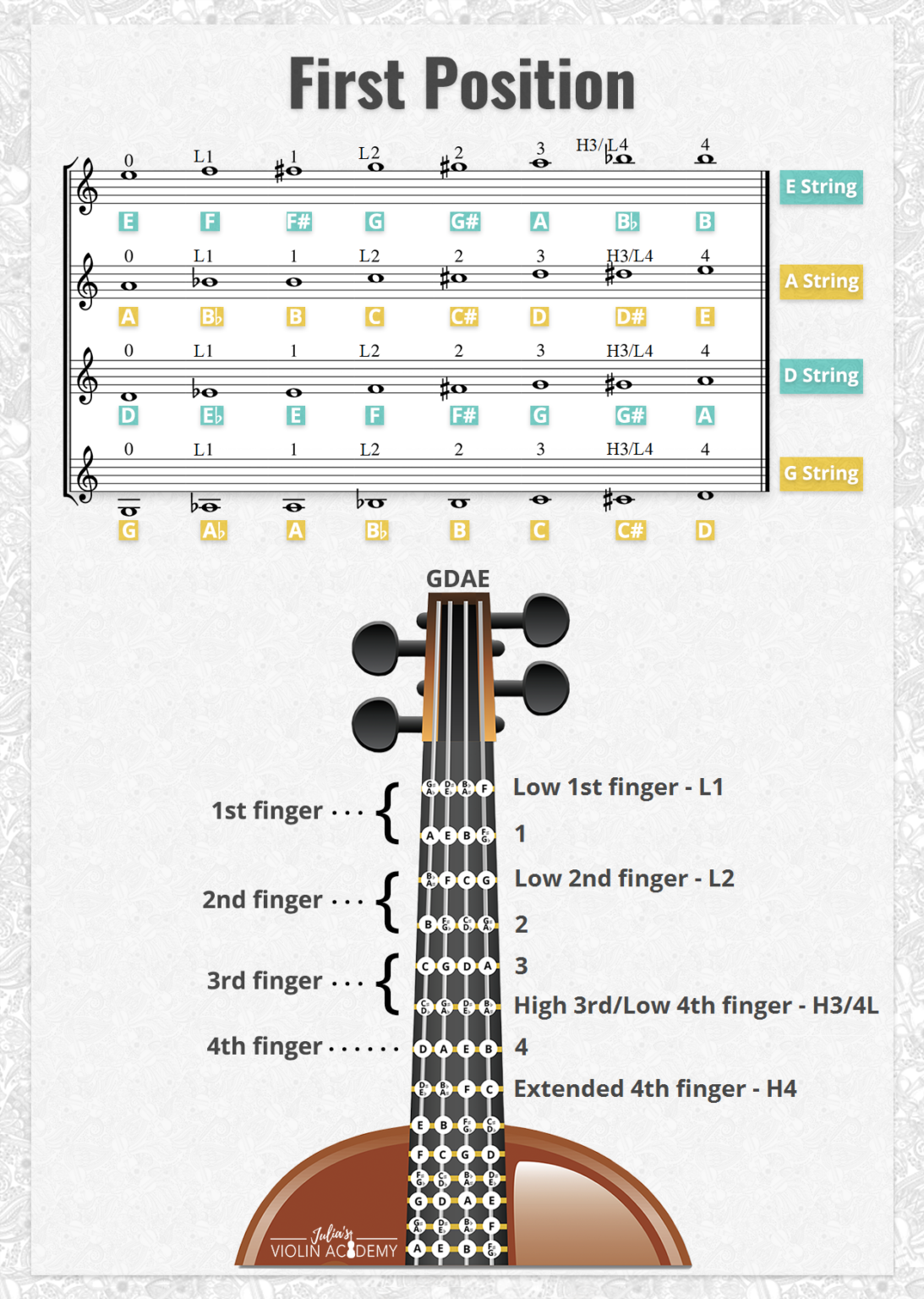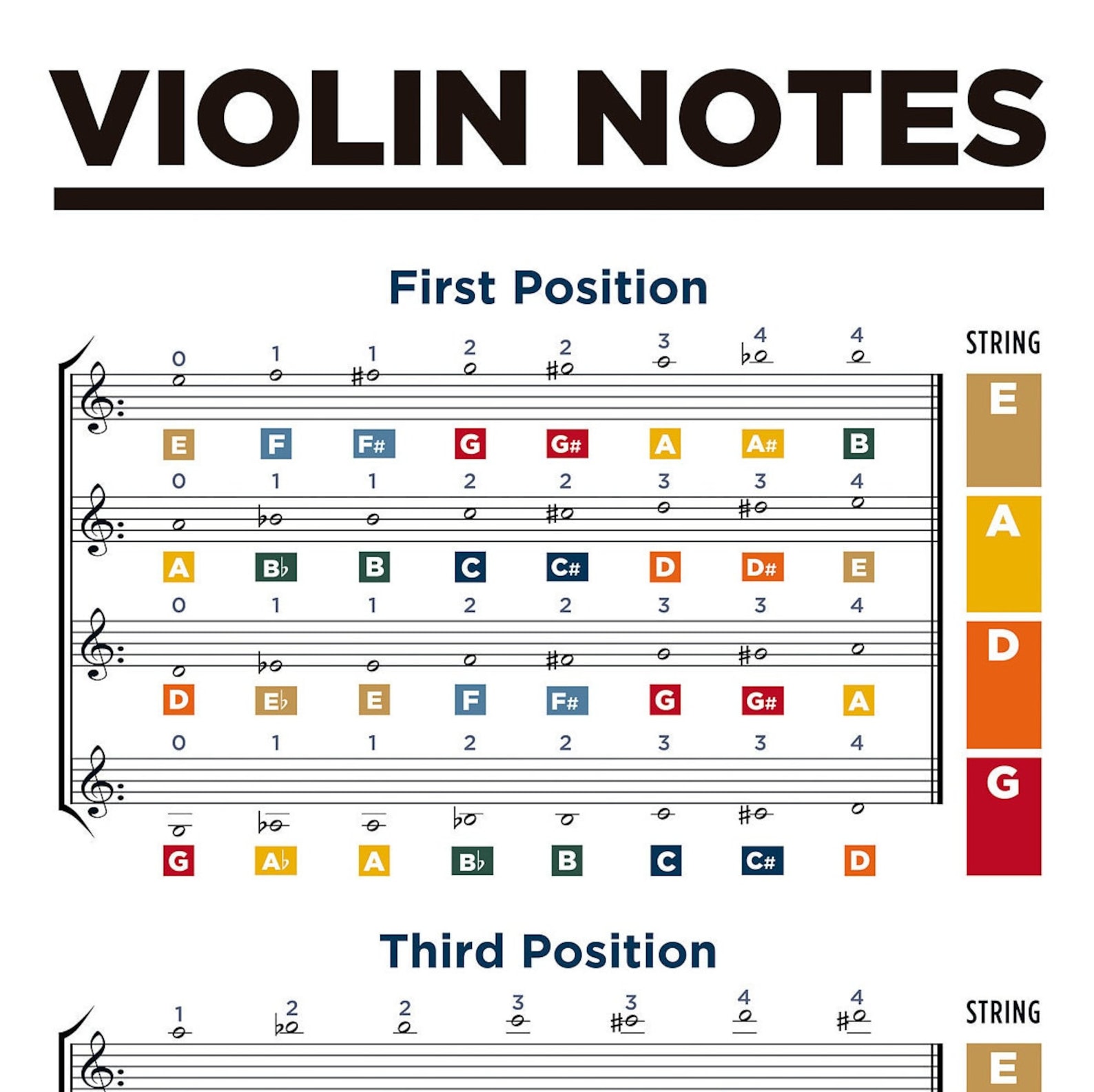Ever wondered how violinists produce those enchanting melodies? The secret lies in understanding violin notes. Whether you're a budding musician or simply curious about the instrument, this guide will walk you through the basics of violin notes and help you uncover the magic behind the strings. From the lowest G3 to the highest A7, we'll explore the notes that make the violin such a captivating instrument.
Learning violin notes isn't as intimidating as it might seem at first glance. Think of it like learning a new language—once you get the hang of it, expressing yourself becomes second nature. This article will cover everything from the fundamental notes to advanced techniques, ensuring you have all the tools you need to start your musical adventure.
With a combination of practical tips, engaging exercises, and resources to help you along the way, this guide aims to make learning violin notes enjoyable and straightforward. So, if you're ready to embark on a musical journey, let's explore the world of violin notes together.
What Are All the Violin Notes?
Alright, let's get down to the basics. The violin consists of twelve notes, which include A, A#, B, C, C#, D, D#, E, F, F#, G, and G#. These notes form the foundation of all the music you can create on the violin. But here's the thing—each string on the violin has its own set of notes that you can play, depending on your finger placement.
For instance, the lowest note you can produce on a violin is G3, while the highest is A7. That's quite a range, right? But don't worry, you don't have to master all of them at once. Start with the basics, and as you progress, you'll gradually expand your repertoire. In fact, many beginners start by learning the notes in the first position, which involves playing eight different notes on each string.
How Do You Read Violin Notes in First Position?
Now, let's talk about reading violin notes in the first position. This is where most beginners start, and it's a great place to build your confidence. To help you out, there are finger charts and sheet music available that show you exactly where to place your fingers. It's like having a map to guide you through the early stages of learning.
Here's a little tip: when reading sheet music, remember the notes in the spaces spell out the word FACE. This memory trick can make it easier to identify the notes on the staff. And don't forget about ledger lines! These are the little lines that extend above and below the staff, allowing you to play notes outside the standard range.
What Are the Consecutive Letter Names of Violin Notes?
Let's break it down even further. The consecutive letter names of violin notes begin with the open G string. From there, you progress through the alphabet, adding sharps and flats as needed. For example, after G comes A, then A#, and so on. This system is known as scientific pitch notation, and it's a handy tool for pinpointing where your violin string notes align with the piano.
When tuning your violin strings, it's crucial to know which G, D, A, and E notes you're aiming for. This ensures your instrument sounds just right, and it sets the stage for producing beautiful music. By the way, always double-check your tuning before you start playing. You can use an online violin tuner with a microphone to make this process a little easier.
Can You Play Notes in Different Violin Positions?
So, you've mastered the first position—what's next? Well, you can actually play notes in different violin positions, which opens up a whole new world of possibilities. Each position allows you to access a different set of notes, giving you more flexibility and versatility in your playing. It's like discovering new paths to explore on your musical journey.
For example, shifting to the second position means moving your hand slightly up the fingerboard, enabling you to play higher notes. This technique takes a bit of practice, but with time, you'll find it becomes second nature. Just remember, it's all about finding the right balance between your fingers and the strings.
Where Can You Find Free Violin Sheet Music?
Looking for free resources to help you practice? There are tons of websites offering free violin sheet music for all levels. These resources are invaluable for beginners and experienced players alike, providing a wealth of material to keep you inspired and motivated. Plus, you can download and print the sheets, making it easy to practice wherever you go.
Here's a little secret: some of the best free violin sheet music is selected and arranged by experienced violin teachers. This means you're getting high-quality material tailored to your skill level. Whether you're into classical pieces or modern tunes, there's something for everyone. So, why not check out some of these resources and see what catches your eye?
Why Are Violin Notes Important for Beginners?
Violin notes form the backbone of your musical education. Without a solid understanding of these notes, it's tough to progress beyond the basics. But here's the good news—learning violin notes doesn't have to be a chore. With the right approach, it can be an exciting and rewarding experience.
Think of it this way: every time you learn a new note, you're adding another tool to your musical toolbox. This builds your confidence and equips you with the skills you need to tackle more complex pieces. Plus, as you start to recognize patterns and positions, playing the violin becomes more intuitive and enjoyable.
What Resources Are Available for Learning Violin Notes?
There are plenty of resources available to help you learn violin notes. From online tutorials to printed guides, you're spoiled for choice. Some of these resources even offer free lessons, making it easier than ever to get started. It's all about finding what works best for you and sticking with it.
For instance, websites like Violinspiration.com offer a wealth of free violin lessons designed specifically for beginners. These lessons cover everything from the basics of violin notation to advanced techniques, ensuring you have all the information you need to succeed. And the best part? You can access these resources from the comfort of your own home.
How Can You Practice Violin Notes Effectively?
Practicing violin notes effectively is all about consistency and patience. Set aside a little time each day to work on your skills, and you'll notice improvements over time. Start with simple exercises, gradually increasing the difficulty as you become more comfortable. This approach helps you build a strong foundation and prevents you from feeling overwhelmed.
One effective method is to use finger charts and sheet music to practice specific notes and positions. This gives you a clear target to aim for and helps you track your progress. Additionally, try playing along with recordings or backing tracks to add an extra layer of fun to your practice sessions. Remember, the key is to enjoy the process and celebrate your achievements along the way.
What Are Some Tips for Beginners Learning Violin Notes?
Learning violin notes can be a bit tricky at first, but with the right mindset, it becomes much easier. Here are a few tips to help you along the way:
- Start with the basics and gradually work your way up.
- Practice regularly, even if it's just for a few minutes each day.
- Use visual aids like finger charts to help you memorize the notes.
- Don't be afraid to experiment and try new things.
- Stay patient and persistent—progress takes time.
By following these tips, you'll find that learning violin notes becomes less daunting and more enjoyable. Remember, every great violinist started out as a beginner, so trust the process and enjoy the ride.
Table of Contents
- What Are All the Violin Notes?
- How Do You Read Violin Notes in First Position?
- What Are the Consecutive Letter Names of Violin Notes?
- Can You Play Notes in Different Violin Positions?
- Where Can You Find Free Violin Sheet Music?
- Why Are Violin Notes Important for Beginners?
- What Resources Are Available for Learning Violin Notes?
- How Can You Practice Violin Notes Effectively?
Learning violin notes is a journey filled with discovery and growth. By taking it one step at a time and utilizing the resources available, you can develop a deep understanding of the instrument and its notes. So, grab your violin, and let's make some music together!



Detail Author:
- Name : Ms. Amanda Medhurst Sr.
- Username : torrance73
- Email : easton.hoeger@wisozk.net
- Birthdate : 2002-02-16
- Address : 54214 Pollich Mountain Apt. 136 Jakaylaview, MD 92252-5353
- Phone : +1-260-899-0306
- Company : McClure, Monahan and D'Amore
- Job : Electromechanical Equipment Assembler
- Bio : Dolores quia est quas iure. Iste magni quas voluptatum voluptatem. Non voluptatem quisquam veritatis quod qui. Quia totam ut qui molestiae impedit non dolorem.
Socials
twitter:
- url : https://twitter.com/opal5428
- username : opal5428
- bio : Et ut ut minima quod quod. Voluptatem sed occaecati ut consequatur. Est qui et eos ut officia perspiciatis quia aperiam.
- followers : 6205
- following : 2227
instagram:
- url : https://instagram.com/cummerata2005
- username : cummerata2005
- bio : Minus vitae asperiores quam similique quisquam in sunt. Unde qui maiores quas blanditiis.
- followers : 786
- following : 2963
linkedin:
- url : https://linkedin.com/in/opal_dev
- username : opal_dev
- bio : Impedit laborum aut itaque non ut.
- followers : 4013
- following : 2194